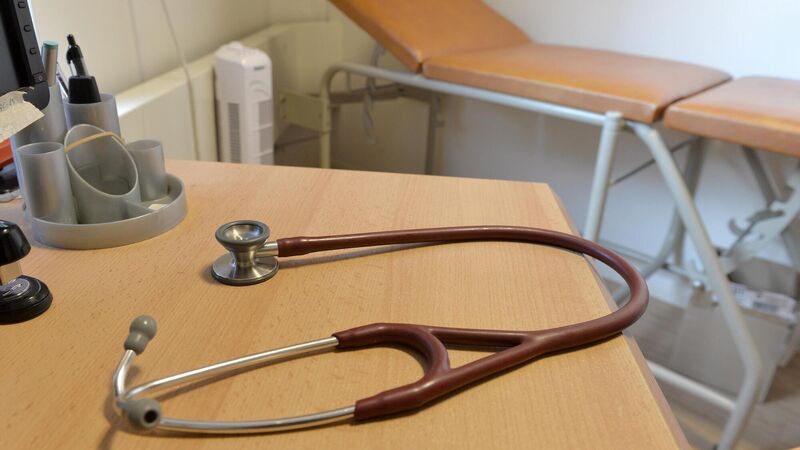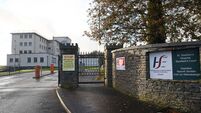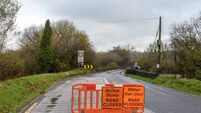Cork GP highlights big shortage of doctors

The expansion of free GP care to close to 500,000 people this year is supported by the landmark agreement between the Department of Health, the HSE, and the Irish Medical Organisation (IMO) signed in early July, which put in place a series of financial supports for GPs.
WHILE president of the Irish College of General Practitioners (ICGP) Diarmuid Quinlan has welcomed the recent announcement about the expansion of free GP care to 215,000 newly eligible people, he has also raised serious concerns about a workforce deficit in general practice.
The expansion of free GP care to close to 500,000 people this year is supported by the landmark agreement between the Department of Health, the HSE, and the Irish Medical Organisation (IMO) signed in early July, which put in place a series of financial supports for GPs.
On August 8, free GP care was expanded to 78,000 children aged six and seven.
Earlier this month, free GP care was expanded to 215,000 people aged between eight and 69 on a means-tested basis, and from November 13, it will be expanded to 215,000 more people on a means-tested basis.
Speaking to The Echo, Dr Quinlan, a GP partner of Woodview Family Doctors in Glanmire, said the ICGP welcomes the expansion of the programme, describing it as really important.
“We are outliers in Europe. In most European countries people largely have access to their GP which is free at the point of care,” he said.
“We know that in Ireland people who have to pay for it [GP care] don’t go as often, so they may defer their healthcare and they may suffer as a result of that, so we welcome this expansion,” he said.
Pressures in general practice
Dr Quinlan raised concerns, however, about the pressures that general practice will come under amid this expansion and said GPs face a very substantial workforce deficit while expanding access to the service.
“We have really good evidence in Ireland showing that when the under sixes got free access to their GP, their consultation rates increased by 30%, which is in line with the European average, so it wasn’t that people were consulting unnecessarily, but essentially they were under- consulting,” he said.
“Obviously, when you give half a million access to medical cards and consultation rates go up, you clearly need more GPs to manage that.”

Dr Quinlan said there are a lot of factors at play, in terms of the pressures GPs and GP nurses are under, including population growth, an ageing population, and an ageing GP population.
“It comes on the back of factors such as population growth, we’re over five million; Covid put a lot of additional work on GPs and medical practice; the existing expansion of the medical card system; we now have the oldest population in Europe so older people need very substantial GP care; and we have a very large rural population with a third of our population living in rural areas which in European terms is most unusual. Across the Earth, it’s 15%, and with a population who are spread out in rural areas, it’s more difficult for them to access GP care.
“We also have an ageing GP population. One in seven of our GPs are over the age of 65 and we have about a head count of 4,200 GPs so it’s about 600 who are aged 65 and over.
“So we have a major GP workforce shortage. There’s lots of drivers,” he said.
He said pre-pandemic indications from the Irish Medical Council, Department of Health, and HSE highlighted the need for a significant increase in the number of GPs.
“We need well north of 6,000 GPs and if we currently have 4,200 and we’re going to lose another 600 by the end of 2025, you can see we face a very substantial workforce deficit while expanding access to the service.”
Need for more doctors
Dr Quinlan said the ICGP is working hard with the HSE and the Department of Health to expand the GP and GP nurses workforce, including a rapid expansion of the number of GP training places.
“In 2015, we had 125 GP training places and that is 285 this year. The Government would like it to be 350 next year,” he said. “I would put that against the backdrop of the fact that we have doubled the number of HSE consultant posts in the last 15 years.
“We welcome that and we all know that the private hospital consultant numbers have absolutely mushroomed in the last 15 years, whereas the GP workforce has remained relatively static, so it’s really important that strategically, politically, and in terms of resources, that we actually put very substantial resources into expanding our GP numbers and our GP nurse numbers,” he said.
“We have about 2,200 GP nurses in the country, and we would like to double that. Is that feasible? The HSE went from 48,000 HSE nurses in 2019 and we now have 52,000 nurses in HSE, so general practice looking to go from 2,000 to 4,000 in the bigger scheme of things is a small ask.”
Winter concerns
Dr Quinlan said the increased workload will “really start to bite” once the seasonal flu and Covid vaccines are offered later this month.
“As people get coughs and colds and influenza, access to your GP will become increasingly challenged,” he said. “That has implications right across the health sector, mostly immediately obvious in GP out-of-hours, but also in the emergency departments, so these are very predictable. We are working hard with the HSE and Department of Health to support patient access appropriately, but it is going to be a challenging six months.”
Dr Quinlan advised people to get their Covid-19 and flu vaccines ahead of the winter season.










 App?
App?





